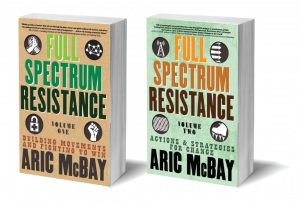A few years ago I was part of a large grassroots campaign involving prisons and agriculture. It began when the federal government of Canada decided to shut down the six prison farms in the country. Those were farms that operated on prisons, where prisoners produced food for their fellow prisoners, got experience, and worked with plants and animals. Everyone we spoke to on the inside told us that the prison farms were valuable for prisoners and that working on the farms (a sought-after position) helped them to cope with their circumstances. The prison farm program also paid for itself through the food produced.
But the Conservative government decided to shut the prison farms down as part of their “tough on crime” agenda. They wanted to scrap rehabilitation programs, criminalize more people for minor lawbreaking, lengthen sentences, and build larger “super-jails” to accommodate all of the new prisoners this would create. Cramming huge numbers of people into tiny cells without any access to social programs would supposedly increase public safety.
It quickly became clear that the Conservative plan to shut down the prison farms had nothing to do with them being “cost effective.” Rather, they wanted to get rid of a program that was actually offering some benefit to inmates, because they felt that prisoners did not “deserve” to work with plants and animals or to go outside. The prison farms, in other words, did not function as a source of punishment. Farmwork was “coddling” the prisoners.
Prisons are big business. The Conservative prison plan meant that billions and billions of dollars would be spent on building new prisons, new security technology, and guard wages, along with feeding and clothing additional inmates. This money would go to the corporations that make up the prison-industrial complex—corporations that profit from human suffering and the destruction of human communities. Those companies would use their profits to lobby for even more criminalization.
Two of Canada’s six prison farms are at Kingston, Ontario, the city nearest to me. One of them is on eight hundred acres of land in the middle of Kingston. It’s been called the largest urban farm in North America. On its four sides it is bordered by a sprawling factory, a commercial strip, a residential area, and a large network of sensitive wetlands. It was apparent that if the farm was closed the next step would be for the government to take that land and build a superprison or simply sell it for development.11
Kingston has a strong local food movement, thanks to the progressive National Farmers Union, and awareness of fossil-fuel issues and climate change, so a lot of people understood that this farmland in the middle of the city was invaluable and could even keep people from going hungry in the future. After the planned closure was announced, a group of farmers and social justice activists tried to convince the government to reconsider. They spent a year trying to meet with government officials, organizing letter-writing campaigns and petitions. They explained how valuable the prison farms were both in terms of food security and as a form of rehabilitation—that they wanted to see people released from prison “healed and not hardened.” The government made no substantive response, aside from the occasional insult.
Frustrated at government stonewalling, some of the organizers decided it might be time to escalate to civil disobedience, and so they brought me in to the core group. Civil disobedience, like all forms of resistance, is more effective when organized, and we required specific things to undertake civil disobedience. We needed to gather intelligence to identify points of leverage. The main site was a dairy farm with hundreds of cows and only one main access road—if they tried to move out cattle or equipment, we could blockade that road with our bodies. So we needed to be able to watch the farm for signs that equipment was being moved out. We needed to know who was available to show up and be arrested, and when, on a twenty-four-hour basis. We needed robust ways of mobilizing hundreds of people in minutes. For a blockade we would need communications, lawyers, civil disobedience training for the participants, and so on.
As we began to put that organization in place we held a big event to mark the shift in the campaign. Author Margaret Atwood—among the most renowned figures on the Canadian left—joined us to speak. My job was to give a speech that would lay out the rationale for civil disobedience, along with a bit of its history, and explain how it fit into the campaign.
In the minutes before the event began, several organizers and close supporters came up to me and said things like “make sure to emphasize that it is nonviolent civil disobedience” or “make sure to say peaceful civil disobedience” and so on. If I had taken every bit of last-minute advice that was pressed upon me, I would have been speaking on “passive nonviolent peaceful democratic civil disobedience.” Some organizers were nervous and wanted to make the shift in strategy seem as polite and nonthreatening as possible.
The venue, a big old limestone church, was soon completely full. Eight hundred people were seated inside and more waiting outside. This was an enormous turnout for a political rally in a small city.
A few others spoke before me, so when it was my turn on the stage the crowd was already enthusiastic. But as soon as I mentioned the possibility of physically blockading trucks, the entire audience burst into applause. I hadn’t yet explained how civil disobedience worked or why it was important. They already got it.
Not because they were all familiar with that history. But because they understood that if powerful people are threatening your community—if they are bullying people, if they are ignoring you when their job is supposedly to listen—then, well, more polite requests aren’t going to cut it. It wasn’t some deep philosophical revelation. It was common sense. This was an important moment in my understanding of the campaign. The crowd’s enthusiastic response came in part because they weren’t as immersed in a liberal culture as some of the organizers. (The willingness of everyone involved in the prison farm struggle to persist and escalate would eventually lead to a win after a nine-year campaign.)
In stories or movies about resistance, the leaders are always the brave ones, willing to take risks and giving their communities the courage to stand up for themselves and to fight back. That, after all, is what makes them leaders.
But in real-world organizing on the left, I’ve often seen the opposite. Those in leadership or organizing positions, afraid of alienating their sympathizers or (more importantly to some) their funders, often take the least confrontational position they can. They adopt the politics of the lowest-common-denominator, which means little danger of conflict—and little risk of success. Again and again, I have seen liberal “leaders” who instead of demonstrating initiative and bravery actually hold back the people they are supposed to be leading. People of influence who discourage action and escalation in situations where it is clearly needed.
Longtime civil disobedience organizer George Lakey tells the story of how he was invited by a progressive coalition in Washington, D.C., to design a set of nonviolence protests for them. He recounts: “My first question to the group of national leaders was: ‘Where is the rebel energy in your coalition?’ Silence followed. Finally, they began reciting the story of when various militant groups had left the coalition in disillusionment. In short, there was no rebel energy left. ‘In that case,’ I said, ‘this will be a short meeting.’”12 He left.
Our ideologies are supposed to be liberating and empowering. They are supposed to make us more capable of defending our communities and building new ones. But too often they do the opposite. People grow encumbered by their ideas instead of empowered.
In the modern left those in leadership positions are often the most strongly enculturated with liberal ideas. They want to follow in the footsteps of people like Martin Luther King or Nelson Mandela, but they often do not know the details of the movements they want to emulate.
Obviously none of this is meant to impugn the people I organized with during the prison farm campaign, who were intelligent, serious, and dedicated. This is a comment on the culture of the left as a whole, which—though it often idolizes certain figures—has largely forgotten the specifics of those historic strategies and tactical choices.
This cultural amnesia is an enormous loss, and it means that the left in general has lost its bearings. You can’t tell where you’re going unless you know where you’ve been. Furthermore, that history of struggle is profoundly useful for our modern-day struggles. It is a library from which we can draw strategies and tactics. It is a deep well that can offer us inspiration and spiritual renewal. And it is an armory from which we can obtain the tools we need to defend human and ecological communities.
The loss of this cultural legacy has not been an accident. It has not just been passively forgotten, but actively dismissed and buried, by those on both the left and the right.


